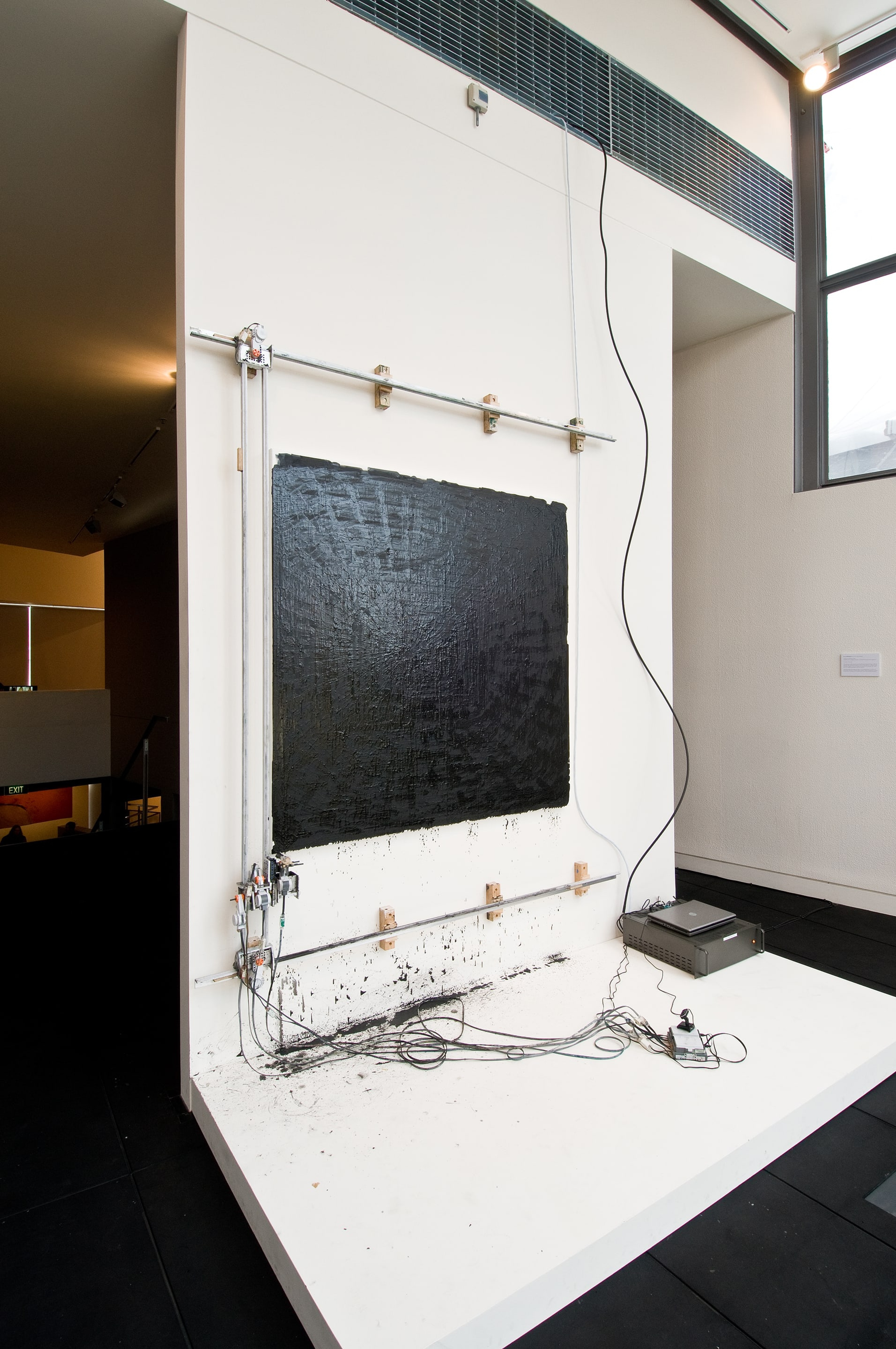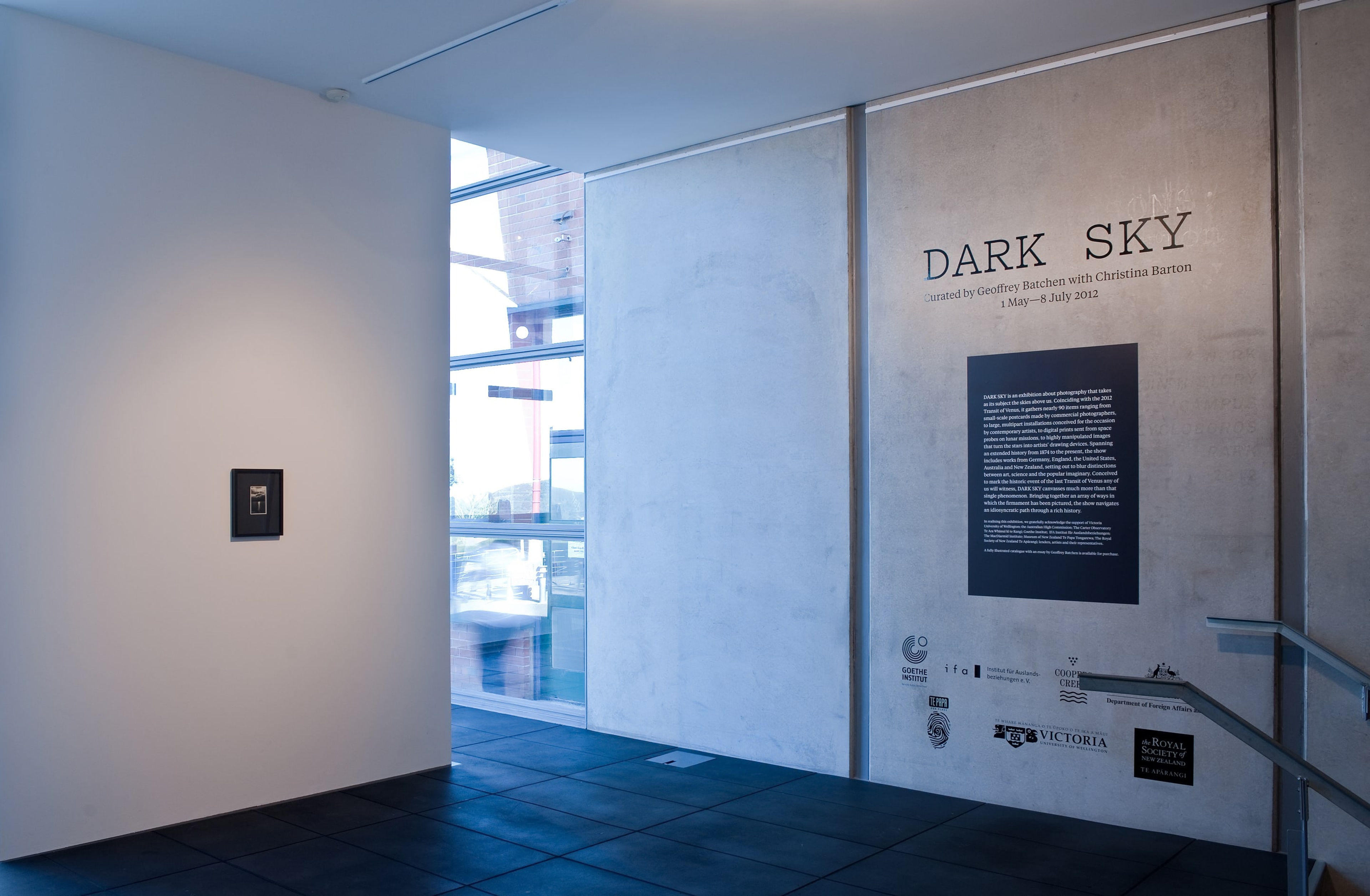Dark Sky
Stella Brennan
Simon Ingram
Hermann Krone
Eric Lee-Johnson
Colin McCahon
Trevor Paglen
Thomas Ruff
Ann Shelton
David Stephenson
Wolfgang Tillmans
curated by Christina Barton and Geoffrey Batchen
30 April – 08 July 2012
Timed to coincide with the 2012 Transit of Venus, the Dark Sky exhibition explored how photography has been deployed to capture the skies. Delving into the intersections between science, art and commerce, the exhibition brought together a range of images and artworks from 1874 to the present. These ranged from pocket-sized Real-Photo Postcards, to digital prints sent from space, to large-scale contemporary images and multipart installations, made by artists, astronomers, professional photographers, and unmanned spacecraft.
Timed to coincide with the second and last Transit of Venus that took place this century (6 June 2012), the exhibition provided an occasion to think through our fascination for the celestial realm and examine its technological and visual consequences.
Dark Sky was conceived by Geoffrey Batchen, leading photographic historian and theorist and Professor of Art History, and curated with Christina Barton, contemporary art historian and Director of the Adam Art Gallery, Victoria University of Wellington. Pooling their skills and knowledge they produced a striking line-up of historical and contemporary items, ranging from photographs by Hermann Krone—a professional photographer on the German expedition to the Auckland Islands, who documented the Transit of Venus in 1874—to contemporary German artist, Wolfgang Tillmans, who presented a body of work based, in part, on his life-long passion for astronomy and which includes a series of photographs he took of the Transit in 2004.
The exhibition also included substantial groupings of images by David Stephenson (Australia), Trevor Paglen (USA) and Eric Lee-Johnson (New Zealand) and single works by Colin McCahon (NZ), Ann Shelton (NZ) and Thomas Ruff (Germany). Two New Zealand artists were commissioned to create new works for the exhibition. Stella Brennan used research she had undertaken into the Soviet Union’s Venera space programme of the 1980s to develop a sound installation and Simon Ingram built an inflatable antenna that translated electromagnetic waves into instructions that drove a machine that produced a new ‘radio painting’.
Dark Sky received major support from the Australian High Commission; Goethe-Institut; IFA (Institut für Auslandsbeziehungen); the MacDiarmid Institute and the Art History Research Cluster at Victoria University of Wellington. The Adam Art Gallery also acknowledges the support of the Faculty of Science, Victoria University of Wellington; the National Institute of Creative Arts and Industry at University of Auckland, and the Royal Society of New Zealand.

Installation view, Dark Sky, Adam Art Gallery Te Pātaka Toi, Victoria University of Wellington, 2012. Photo: Robert Cross

Installation view, Dark Sky, Adam Art Gallery Te Pātaka Toi, Victoria University of Wellington, 2012. Photo: Robert Cross

Installation view, Dark Sky, Adam Art Gallery Te Pātaka Toi, Victoria University of Wellington, 2012. Photo: Robert Cross

Installation view, Dark Sky, Adam Art Gallery Te Pātaka Toi, Victoria University of Wellington, 2012. Photo: Robert Cross

Installation view, Dark Sky, Adam Art Gallery Te Pātaka Toi, Victoria University of Wellington, 2012. Photo: Robert Cross

Installation view, Dark Sky, Adam Art Gallery Te Pātaka Toi, Victoria University of Wellington, 2012. Photo: Robert Cross

Installation view, Dark Sky, Adam Art Gallery Te Pātaka Toi, Victoria University of Wellington, 2012. Photo: Robert Cross

Installation view, Dark Sky, Adam Art Gallery Te Pātaka Toi, Victoria University of Wellington, 2012. Photo: Robert Cross

Installation view, Dark Sky, Adam Art Gallery Te Pātaka Toi, Victoria University of Wellington, 2012. Photo: Robert Cross

Installation view, Dark Sky, Adam Art Gallery Te Pātaka Toi, Victoria University of Wellington, 2012. Photo: Robert Cross

Installation view, Dark Sky, Adam Art Gallery Te Pātaka Toi, Victoria University of Wellington, 2012. Photo: Robert Cross

Installation view, Dark Sky, Adam Art Gallery Te Pātaka Toi, Victoria University of Wellington, 2012. Photo: Robert Cross

Installation view, Dark Sky, Adam Art Gallery Te Pātaka Toi, Victoria University of Wellington, 2012. Photo: Robert Cross

Installation view, Dark Sky, Adam Art Gallery Te Pātaka Toi, Victoria University of Wellington, 2012. Photo: Robert Cross

Installation view, Dark Sky, Adam Art Gallery Te Pātaka Toi, Victoria University of Wellington, 2012. Photo: Robert Cross

Installation view, Dark Sky, Adam Art Gallery Te Pātaka Toi, Victoria University of Wellington, 2012. Photo: Robert Cross

Installation view, Dark Sky, Adam Art Gallery Te Pātaka Toi, Victoria University of Wellington, 2012. Photo: Robert Cross